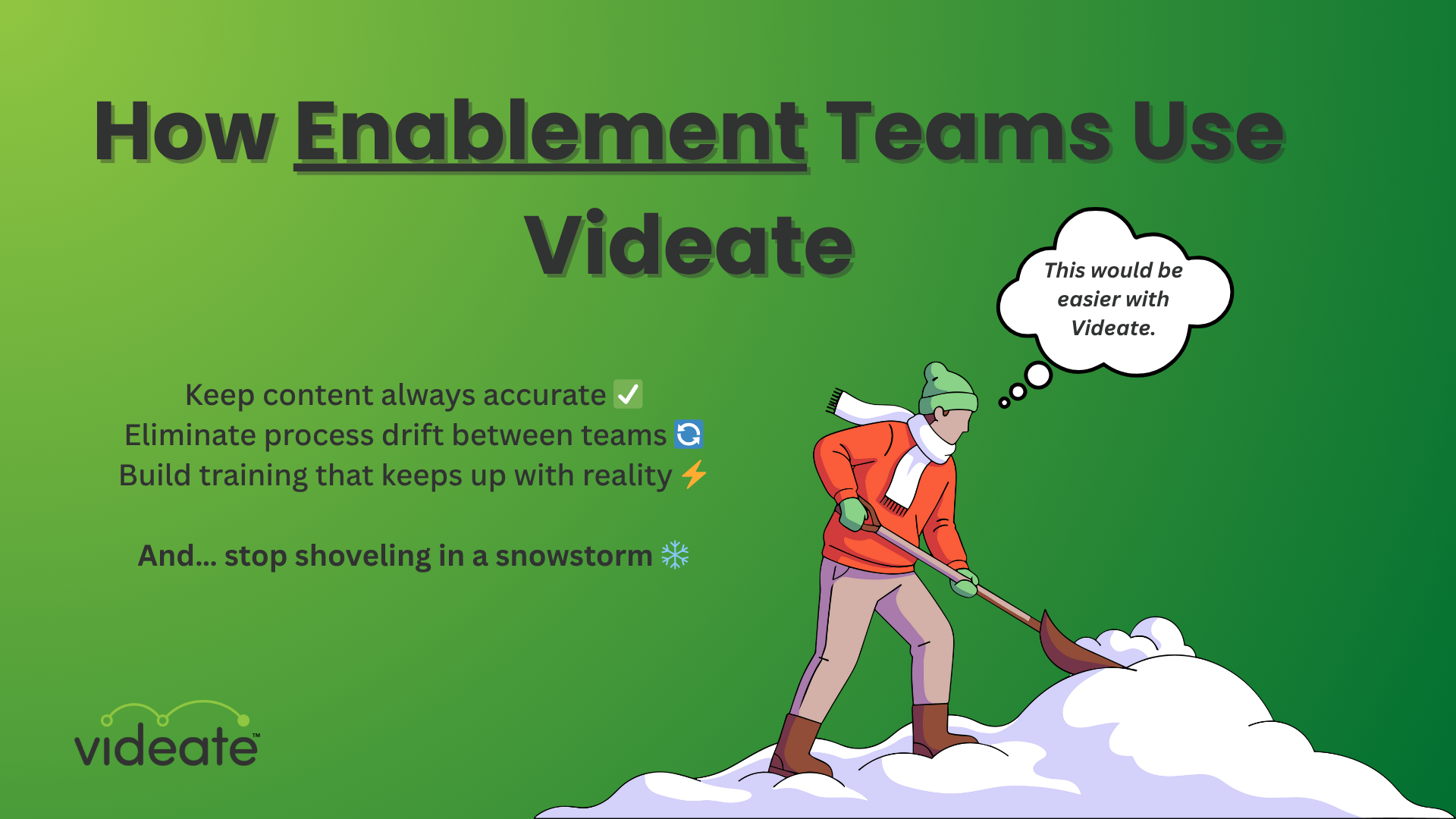
In today’s world of SaaS applications, it’s getting harder and harder to charge for customer education separate from onboarding. You can still charge for certification programs but it’s not that easy to charge customers separately to learn how to use a new product.
That’s become an onboarding expectation in the B2B world and this cost is part of the onboarding fee. While some will argue that there will always be a need for instructor-led training, customer education is moving rapidly to self-paced training. Short videos have become more important than long talking head recordings of someone explaining the product or being in a class.
Once an end-user is up and running, how-to videos and good knowledge base articles should do the job for most people. As many customer success and technical documentation teams know, it’s hard enough to keep help articles and tech docs up to date with the frequency of SaaS software releases.
What about learning content?
Given the amount of product coverage you need, if you use a lot of videos in your customer education offering, you have the same challenge: keeping them up to date with every new release.
Recently at the Thought Industries Cognition conference there was an excellent customer case study on how to overcome learning content that always lags product releases. The customer made a major transformation in the way learning content was developed.
They moved away from a model where updated education materials came months after each release, to one where the learning team was embedded in the release process. Learning content is now part of the "definition of done".
Videos must be in the "definition of done" for every product release.
This can work for a modest amount of manually produced videos. But, without new, time/cost-effective approaches to making video production scalable and sustainable, it’s impossible to keep a growing library of software videos always up to date.
And if you add translating / localizing videos on top of this, the problem is multiplied.
The choice ultimately comes down to product coverage. How many videos can you keep always up to date given your current time and budget? Every company we speak with says it’s time-consuming and people-intensive to keep videos up to date.
Out of date videos make a huge impact. and not a good one.
TED talks are limited to 18 minutes because that is what user engagement data says works. Recordings of instructor-led sessions are not the way to go. Especially if you demo your software in the recordings. By definition, once a new release comes out, instructor-led videos are out of date.
Videos that are out of date with your latest release breed distrust with customers.
Since videos are an important part of the buyer’s journey you’d better make sure they are always up to date.
In fact, one of the other interesting pieces of data from the conference was that customer education has a great impact on customer acquisition, before someone buys your product.
While everyone would like all enterprise SaaS applications to be so intuitive that no education is needed, that is not a reality today. There will always be a need for software videos for initial education and for learning in the flow of work.
If you have a comprehensive library of videos you will increase the impact of customer education on your top line. But only if the videos are always up to date.
Videate customers are using automation to make video production fast and affordable at scale. And we help you increase your product coverage to make videos a viable part of any education offering. Want to learn more? Get a demo now!
.png)
How Customer Success & Education Teams Use Videate


